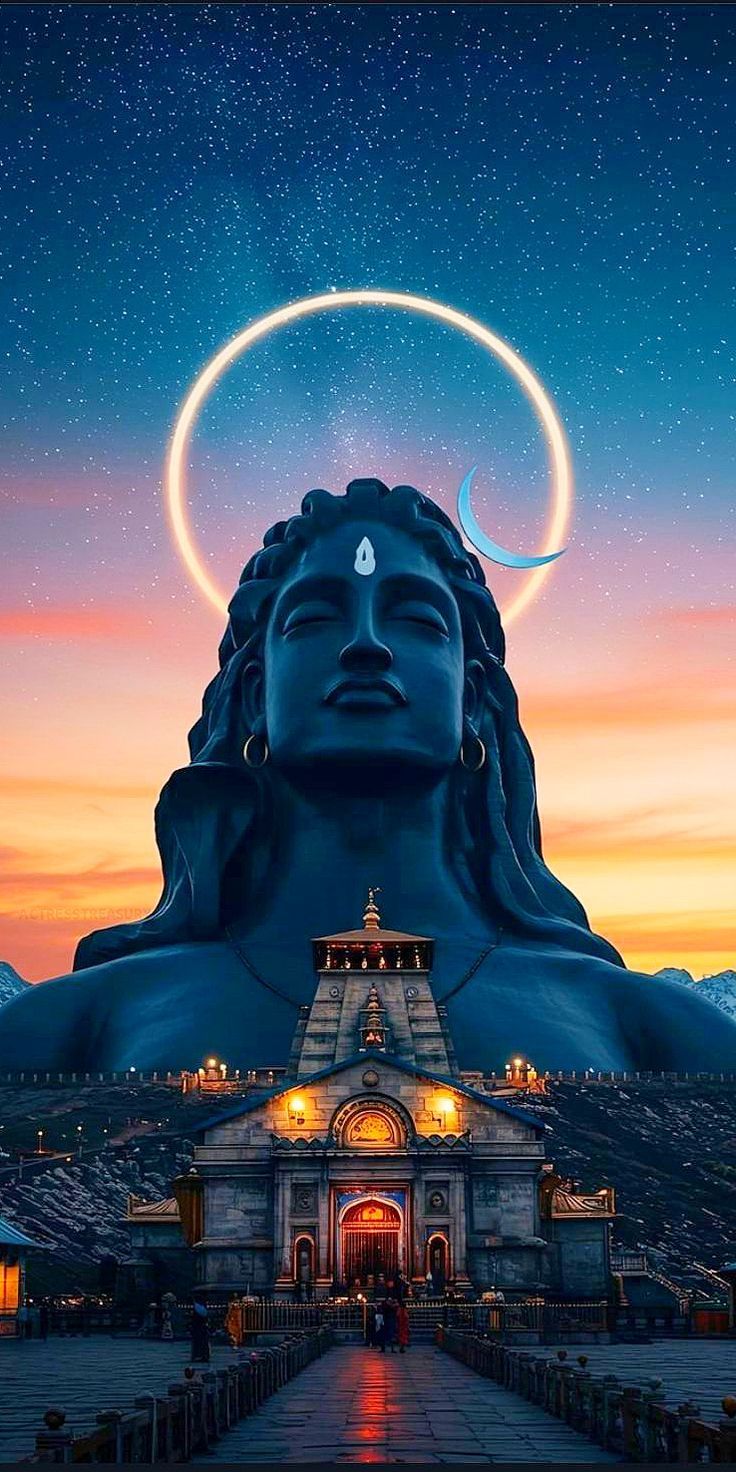9 Incredible Facts About Lord Shiva That Will Amaze You
Lord Shiva, one of the principal deities in Hinduism, is revered as the destroyer and transformer within the Hindu Trinity (Trimurti), alongside Brahma the creator and Vishnu the preserver. Known for his asceticism, meditation, cosmic power, and divine compassion, Shiva embodies both destruction and regeneration, teaching humans the importance of balance, discipline, and spiritual awakening. This article explores his history, fascinating facts, timeline, significance, FAQs, impact on daily life, and societal importance, all in a human-friendly and engaging way.
Shiva
| Characteristics : | Destroyer, Kind Hearted |
| Other Names : | Shambhu Nath, Bhole Shankar, Shiv Shankar |
| Principal Scriptures: | Shiva Mahapurana |
| Consort : | Parvati |
| Sons : | Ganesha, Kartikay |
| Abode : | Mount Kailash |
| Vahana (Vehicle) : | Nandi (The Bull Representing Strength and Happiness) |
| Mula Mantra : | Om Namah Shivaye |
| Shiva Gayatri Mantra: | Aum Panchvakraye Vidmahe Mahadevaye Dheemahi Tanno Rudra Prachodayat |
History of Lord Shiva
The origins and worship of Lord Shiva span ancient Vedic texts, Puranas, and Shaivism traditions:
Vedic Origins: Shiva is linked with Rudra, a Vedic deity associated with storms and the hunt. Over time, Rudra evolved into the benevolent and cosmic Shiva worshiped today.
Depiction and Symbolism: Shiva is often shown with a third eye (symbolizing wisdom and insight), crescent moon, matted hair, serpents, and the trident (Trishul), representing balance of power, knowledge, and cosmic functions.
Family and Consorts: Married to Parvati, father of Ganesha and Kartikeya, reflecting the harmony of family, devotion, and divine energy.
Role in Hindu Epics: Shiva appears in the Mahabharata, Ramayana, and various Puranas, guiding devotees, blessing warriors, and granting boons.
Ascetic and Yogi: Shiva is the ultimate yogi, meditating on Mount Kailash, showing humans the power of self-discipline, spiritual practice, and detachment.
Worship Across Ages: Revered for protection, spiritual guidance, and destruction of negativity, worship of Shiva spans temples, rituals, festivals, and daily prayers.
Interesting Facts About Lord Shiva
Mahadeva – The Great God: Shiva is called Mahadeva, symbolizing the supreme consciousness that governs creation, preservation, and destruction.
The Third Eye: His third eye represents wisdom, intuition, and the destruction of ignorance.
Trident (Trishul): Symbolizes creation, preservation, and destruction, showing the balance of cosmic forces.
Blue Throat (Neelkanth): Shiva drank Halahala poison during Samudra Manthan to save the universe, showing selflessness and sacrifice.
Lord of Dance (Nataraja): As Nataraja, he performs the cosmic dance of creation, preservation, and destruction, symbolizing the cycle of life and energy.
Immense Spiritual Powers: Shiva grants boons, protection, and liberation (moksha) to devotees who seek guidance with faith.
Meditative Symbol: His meditation inspires inner peace, focus, and spiritual growth.
Global Influence: Shiva temples are found worldwide, including Kailash, Varanasi, Chidambaram, and inspire Shaiva communities globally.
Festivals Dedicated: Celebrated during Maha Shivaratri, devotees fast, chant mantras, and meditate, honoring Shiva’s cosmic role.
Timeline of Lord Shiva
Vedic Era: Associated with Rudra, worshiped as a storm and protector deity.
Epic Age: Appears in Mahabharata and Ramayana, aiding devotees and warriors.
Puranic Period: Stories of Neelkanth, marriage to Parvati, birth of Ganesha and Kartikeya become central to Shaivism.
Historical Worship: Shaivism spread across India, inspiring temples, sculptures, rituals, and festivals.
Modern Era: Shiva continues to inspire devotees, artists, yogis, and spiritual seekers worldwide.
Significance of Lord Shiva
Lord Shiva holds profound significance across spiritual, moral, cultural, and societal domains:
Spiritual Transformation: Represents destruction of ego, attachment, and negativity, guiding humans toward spiritual awakening.
Moral Guidance: Teaches selflessness, patience, courage, and detachment.
Protector and Healer: Devotees seek protection from obstacles, healing, and divine blessings.
Symbol of Meditation: Inspires discipline, concentration, and inner peace.
Cultural Icon: Central to dance, music, sculpture, and temple architecture, preserving Indian traditions.
Daily Life Guidance: His teachings encourage balance between work, family, spirituality, and personal growth.
Societal Impact: Festivals, pujas, and rituals promote community unity, devotion, and ethical living.
FAQs About Lord Shiva
Q1: Who is Lord Shiva?
A1: Shiva is the destroyer and transformer of the universe, known for his asceticism, meditation, wisdom, and cosmic power.
Q2: What is Maha Shivaratri?
A2: Maha Shivaratri celebrates Shiva’s cosmic dance, with devotees fasting, chanting, meditating, and performing pujas to honor his divine role.
Q3: What does Shiva’s third eye symbolize?
A3: The third eye represents wisdom, destruction of ignorance, and the power of insight.
Q4: Why is Shiva called Neelkanth?
A4: He drank the poison Halahala during Samudra Manthan to save the world, turning his throat blue.
Q5: How is Shiva worshiped?
A5: Through lingam worship, chanting mantras (like Om Namah Shivaya), meditation, fasting, and temple visits.
Impact on Daily Life
Shiva’s teachings influence personal growth, spiritual development, and societal harmony:
Spiritual Guidance: Encourages meditation, devotion, and self-discipline.
Moral Courage: Inspires honesty, selflessness, and ethical decision-making.
Mental Resilience: Meditation and contemplation cultivate calmness, focus, and emotional strength.
Cultural Engagement: Participation in festivals and rituals strengthens community bonds and cultural identity.
Balance in Life: Shiva’s ascetic yet compassionate nature teaches balance between worldly life and spiritual pursuits.
Observance and Wishing
Maha Shivaratri: Devotees fast, chant mantras, and perform night-long prayers, seeking Shiva’s blessings for wisdom and spiritual growth.
Daily Worship: Recitation of Om Namah Shivaya, offerings to Shiva Lingam, and meditation invoke peace, courage, and protection.
Tuesdays and Mondays: Special days for Shiva worship to enhance spiritual strength and remove negativity.
Wishing: Seek Shiva’s guidance for wisdom, courage, spiritual progress, and balance in life.
Community Participation: Festivals and temple rituals foster ethical living, cultural continuity, and devotion.
Conclusion: Why Lord Shiva Matters
Lord Shiva is a timeless symbol of power, wisdom, devotion, and transformation. His life and teachings emphasize discipline, spiritual awakening, humility, and selfless action, guiding humans toward inner peace and moral excellence.
In society, Shiva inspires community unity, cultural preservation, and devotion, while encouraging individuals to overcome obstacles, cultivate wisdom, and live balanced lives. By embracing Shiva’s teachings, people gain courage, insight, and spiritual fulfillment, creating a harmonious society grounded in ethical, spiritual, and cultural values.
Quick Recap: 9 Incredible Facts About Lord Shiva
Supreme deity and Mahadeva of Trimurti.
Third eye symbolizes wisdom and insight.
Trishul represents cosmic balance.
Neelkanth for selfless sacrifice.
Nataraja – lord of cosmic dance.
Immense spiritual powers and boons.
Inspires meditation and self-discipline.
Celebrated globally through temples and traditions.
Festivals like Maha Shivaratri reinforce devotion and unity.








